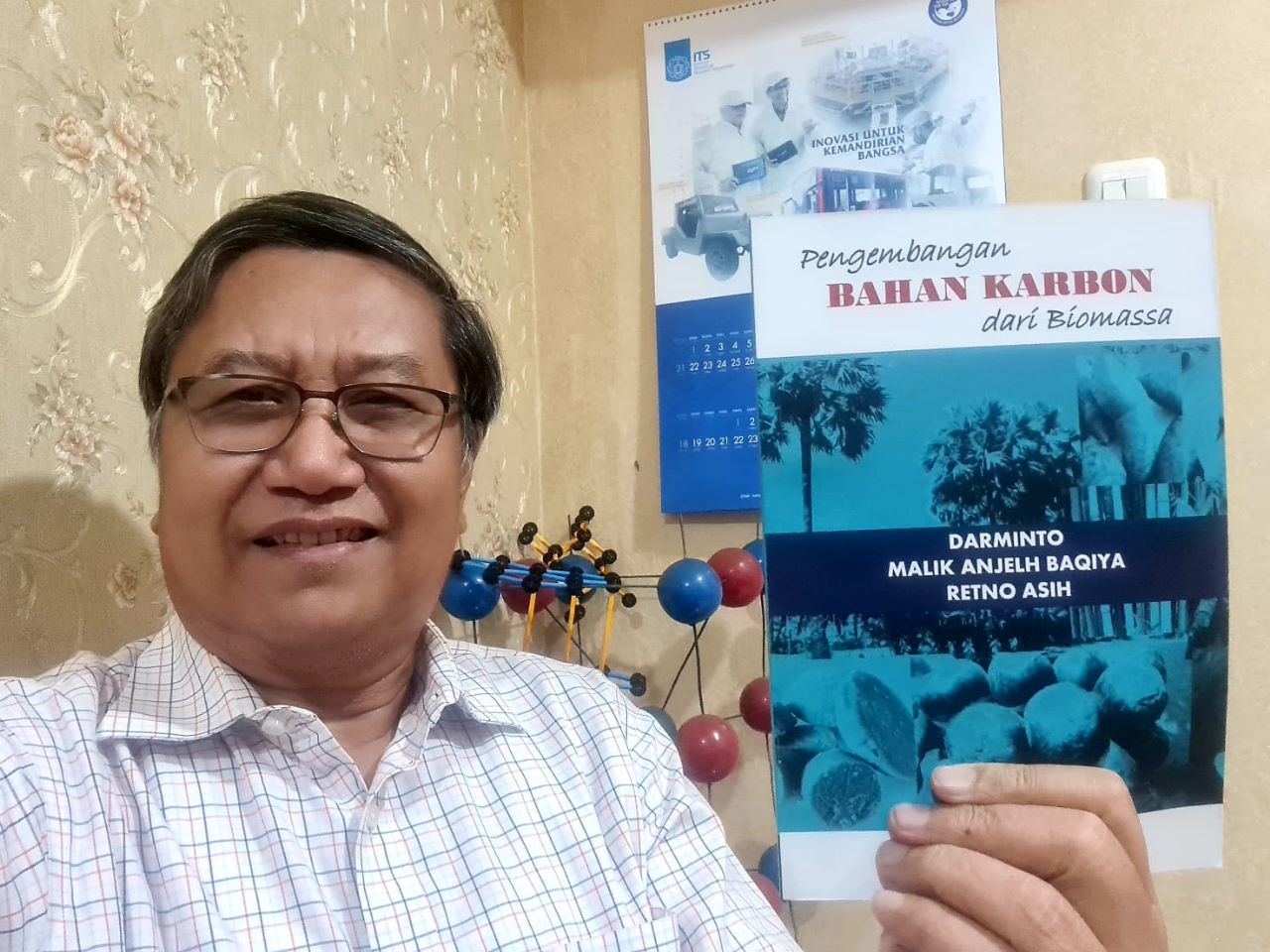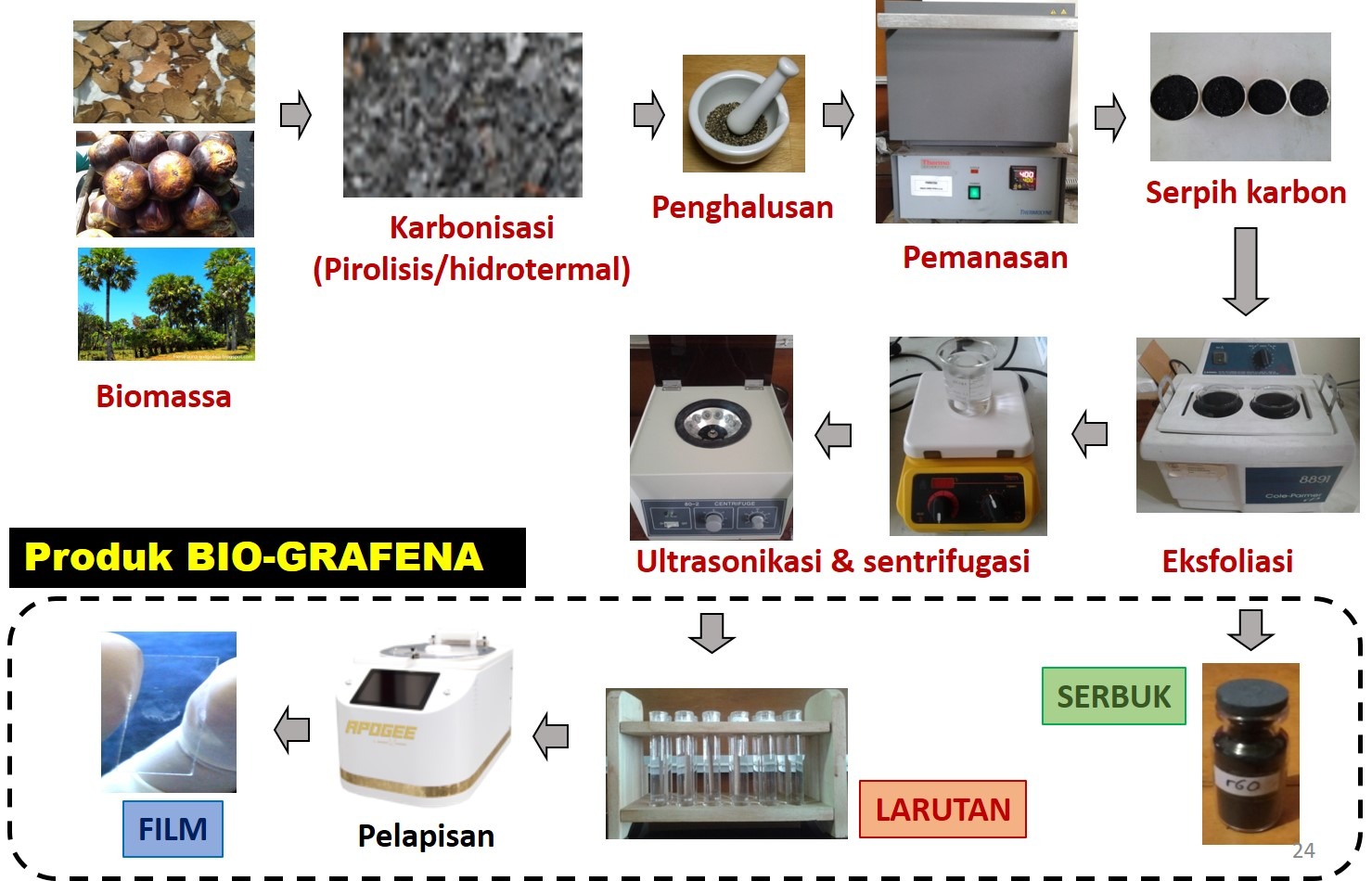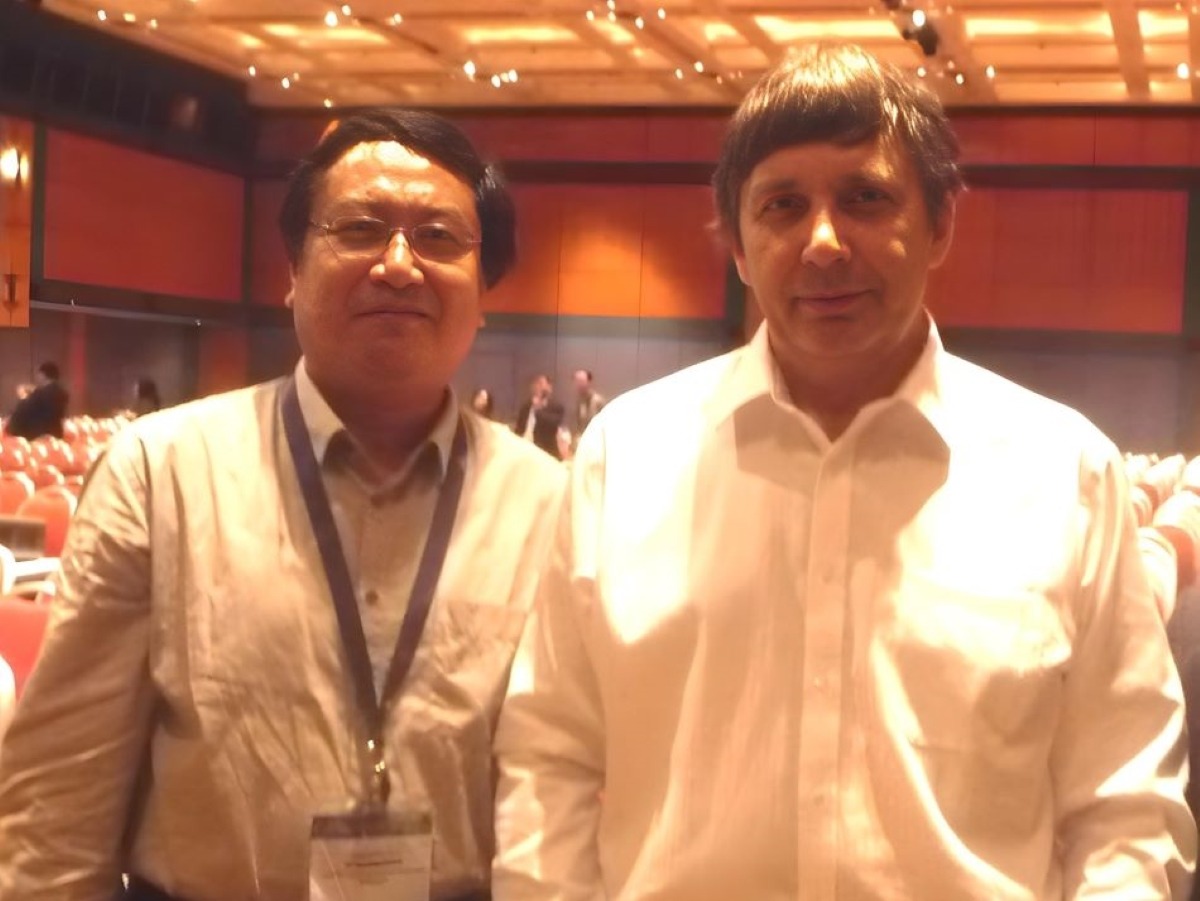ITS Professor Innovates Biomass into Solar Cells Component

Prof. Dr. Darminto MSc, a Physics Professor at Institut Teknologi Sepuluh Nopember (ITS), leads a research team focusing on amorphous carbon material based on graphene into Solar Cells Component.
ITS Campus, ITS News – Sustainable, renewable, and environmentally-friendly energy is currently a major focus of development. Building upon this concept, Prof. Dr. Drs. Darminto MSc, a Professor from the Department of Physics, Faculty of Science and Data Analytics (FSAD) at Institut Teknologi Sepuluh Nopember (ITS), along with his research group, has successfully fabricated semiconductor components for solar cells using biomass.
Darminto explained that amorphous carbon is a semiconductor material used in solar cells to convert solar energy into electric current. Typically, this material is composed of graphite, which is a mined product, making its availability limited. Hence, there is a need for amorphous carbon based on graphene, utilizing renewable resources.
One such alternative is to utilize biomass or organic plant materials. Darminto revealed that their innovation involves using sap from lontar trees, which is converted into carbon powder. This carbon powder is then dissolved and formed into a thin layer. “This thin layer is called amorphous carbon based on graphene,” he stated

The research diagram of the amorphous carbon based on graphene innovation using plant biomass to produce biographene products.
Amorphous carbon based on graphene offers several advantages, including environmentally-friendly raw materials, more affordable raw material costs, and a simpler processing method. This material is also applied in various technological aspects such as supercapacitors, battery electrode materials, various sensor components, and anti-radar coatings.
The amorphous carbon-based biomass device conceived by Darminto and his team is currently in the advanced development stage. However, the efficiency value of the photovoltaic cells or solar cells produced is still around 0.1 percent, which is significantly lower compared to amorphous silicon, which has reached over 10 percent efficiency. “This poses a significant challenge in improving the efficiency of amorphous carbon,” he expressed.

Prof. Dr. Darminto MSc (left) with Prof. Andre Konstantinovich Geim, the Nobel laureate in Physics in 2010 for his discovery of graphene, at an international conference.
The innovation of amorphous carbon based on graphene has been published in an international journal. Darminto remains optimistic that the efficiency value of amorphous carbon based on graphene can be enhanced to match solar cells available in the market. “The limitation of facilities in Indonesia is our main obstacle, so we need assistance from partners outside of Indonesia,” he added.
Through the Matching Fund Kedaireka program from the Ministry of Education, Culture, Research, and Technology (Kemendikbudristek) in 2023, the idea and innovation of this bespectacled lecturer are being vigorously developed for the production of micro biographene materials with private company partners. Darminto hopes that amorphous carbon based on graphene can be mass-produced and implemented in various technological applications in everyday life. (ITS Public Relations)
Reporter: Regy Zaid Zakaria
Related News
-
Facilitating Creativity of Students, ITS Information Systems Department Presents CCWS
ITS Department of Information Systems students conduct a discussion in one of the available spaces in the ITS Digital
July 07, 2023 08:07 -
ITS Explores Electrification Cooperation with PT Vale Indonesia
ITS Campus, ITS News — Following up on the Memorandum of Understanding (MoU) with PT Vale Indonesia, Institut Teknologi
July 07, 2023 08:07 -
ITS Reaches Top 7 BRIN Collaborators with 309 Scientific Publications
ITS Campus, ITS News — Institut Teknologi Sepuluh Nopember (ITS) continues demonstrating its commitment to strengthening collaboration in research
July 07, 2023 08:07 -
The Only One from Indonesia, ITS Student Becomes Erasmus+ Scholarship Awardee
ITS Campus, ITS News — Civitas academica of Institut Teknologi Sepuluh Nopember (ITS) has once again contributed to making
July 07, 2023 08:07
